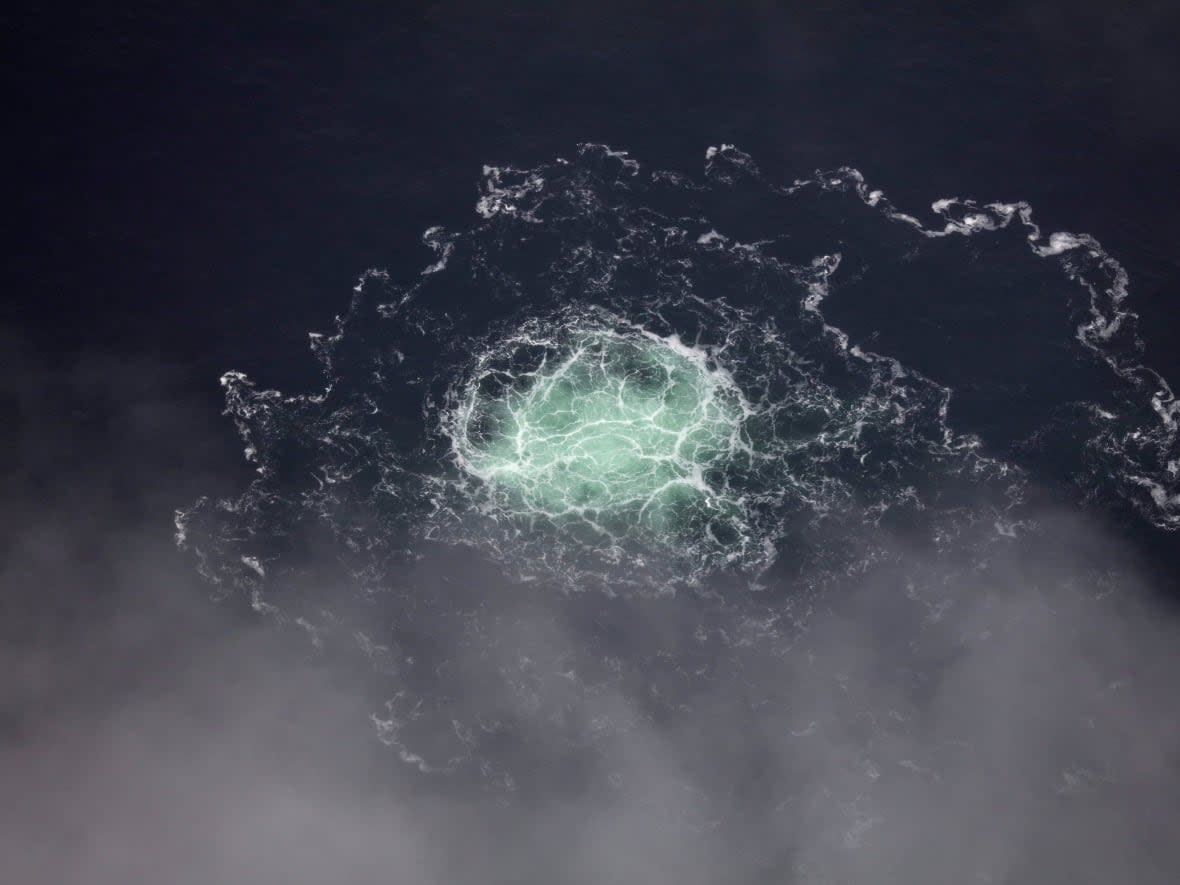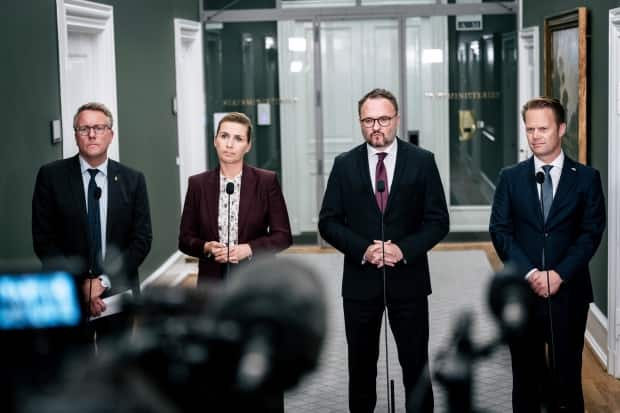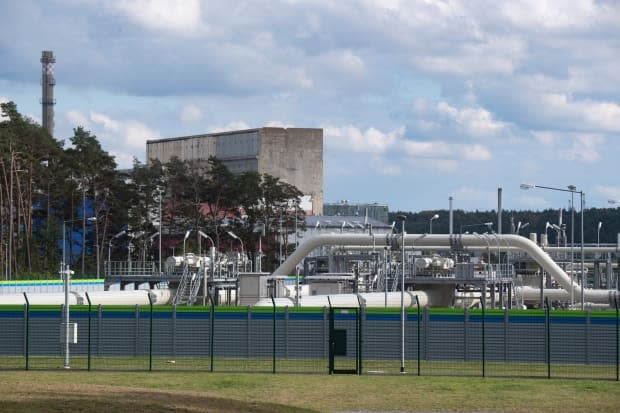Nord Stream pipeline leak in Baltic Sea could cement Europe's shift to renewables — eventually

Before the Nord Stream gas pipelines under the Baltic Sea sprung massive leaks this week, spewing out tons of methane into the water and atmosphere, Europe had started planning for a long-term future without Russian gas — prompted by Putin's war in Ukraine.
Since the February invasion, Russia had been scaling down gas exports through the pipelines that European countries rely so heavily on for home heating and other uses.
Nord Stream 1 opened in 2011 and was a major source of energy for Germany, which got about half its gas from Russia before the war. Nord Stream 2, a second line built to double the capacity of the project, was completed in late 2021 — and filled with gas — but didn't start operating before Germany suspended the project over the war.
By September this year, Russia had stopped pumping gas through Nord Stream 1.
"With this event, the Nord Stream projects are dead. They are finally dead," said Johan Lilliestam, professor of energy policy at the University of Potsdam in Germany and research group leader at the Institute for Advanced Sustainability Studies.
"They've been geopolitically difficult for quite some time, but I don't see any scenario where these pipes come back."

Germany and several other countries turned to their previously mothballed coal plants to start producing electricity again, to conserve scarce supplies of natural gas for heating homes this coming winter.
Now, as Europeans face spiking energy prices, Germany has also decided to delay the full shutdown of its nuclear power plants, which was supposed to happen by the end of 2022. Two of the plants will be kept functional until April next year, as the country tries to secure other energy supplies to get through the colder months.
These sudden changes mean, temporarily at least, European countries will have to emit more greenhouse gases from the burning of fossil fuels to produce energy — even as they plan to shift to greener energy sources like wind and solar in the future.
"So in the short term, emissions are very likely going to increase in Germany and in Europe, simply because we need to turn on whatever capacities we have," Lilliestam said.
"We need whatever energy we can get our hands on this winter and probably next winter. But after that things are going to change, things are going to fall back into place."
'Enormous' leak of methane up to 1 km wide
The gas in question here is what North Americans call "natural gas" — not the gasoline in cars — and is mostly methane, a potent greenhouse gas.
Estimating the amount of methane that will be released into the atmosphere from the leaks is complicated because such a leak — from a major underwater pipeline — has not happened before. Experts are watching the situation closely to see how the methane will interact with the ocean, and what its climate impact will be.

Drew Shindell is a professor at Duke University in North Carolina and a leading scientist on methane emissions. He says watching the huge foaming patches of ocean where the leaks occurred reminded him of watching methane bubbling to the surface in lakes in the Arctic, where the permafrost is melting due to global warming.
"So the basic phenomenon of methane coming out, I was familiar with, but that's usually on the scale of, you know, like a bubble you would see in a bathtub," Shindell said.
"This is enormous."
According to photos and video taken by the Danish armed forces, the bubbling patches in the ocean are up to a kilometre wide. Denmark says the emissions that end up being released could be equivalent to a third of the country's annual emissions, or about 15 million tons of carbon dioxide. By comparison, Canada's emissions in 2019 were 738 million tons.
Methane is a particular concern because it is about 80 times more potent than carbon dioxide in its ability to trap heat as a greenhouse gas. But it is much more short-lived than carbon dioxide.
As the climate crisis escalates quickly in the coming decade, sharply cutting methane emissions is seen as key to limiting warming to 1.5 C, a goal of the international Paris Agreement to avoid more catastrophic impacts.
Shindell says that the exact amount of emissions is still an open question, because it remains to be seen how much of the methane will be oxidized as it passes through the ocean waters, a process that will result in a part of it being released into the atmosphere as much less potent carbon dioxide instead of methane.
Because of the "enormous volume" of the gas being released, Shindell says "we don't really know how it works." Despite the uncertainty, he says we will likely see a very large amount of methane be released, although on a global scale, the impact on the climate will be limited.
Russia's major pipelines into Europe
Energy security in Europe at stake
Since Nord Stream was no longer carrying gas to Europe, the recent damage won't have any further impact on the continent's energy situation. But authorities in Europe, including the Danish government and the NATO military alliance say the leaks were the result of deliberate sabotage.
"It's an attack on European energy infrastructure, European energy security, close to our borders. That's something we will respond to in solidarity in Europe," Jeppe Kofod, the foreign minister of Denmark, said on Wednesday.

Russia has denied responsibility for sabotaging the pipelines and says it has launched its own investigation into what's happened. But the leaks are likely to escalate tensions over the war in Ukraine and how it's impacting European energy supplies.
"Whenever there is a war, of course critical infrastructure is damaged, but there is no war in the Baltic Sea," Lilliestam said.
"So someone has really broken a taboo in this."
How much Europe relies on Russia for natural gas
An accelerated transition?
The war in Ukraine has accelerated Europe's efforts to get off Russian gas; the European Commission proposed a plan earlier this year to cut Russian gas imports into the bloc by two-thirds by the end of 2022.
But demand for gas itself remains. The plan saw the EU trying to find other sources in the short term, including liquefied natural gas (LNG) from major exporters in the Middle East and elsewhere, which will increase greenhouse gas emissions.
At the same time, the bloc will increase funding for renewables like wind and solar for the longer term, and set a renewable energy target of 45 per cent by 2030.
While that's still likely to mean a lot of fossil fuels in the mix, Shindell says the Nord Stream leaks have highlighted another advantage of renewable energy — that it can be more secure in times of conflict.
"Nobody can sabotage the sun and the wind," he pointed out.
"They're immune to this kind of supply disruption."

Lilliestam says the prospect of attacks on pipeline infrastructure is a "nightmare scenario" for Europe right now, because it is heavily dependent on gas imports from Norway and the U.K.
"In the long term, the gas crisis and the current energy crisis and the climate crisis have the same solutions," Lilliestam said.
"This crisis is, if anything, going to speed up the decarbonization of European energy. I'm pretty convinced of that just because the necessity is so much stronger now."


